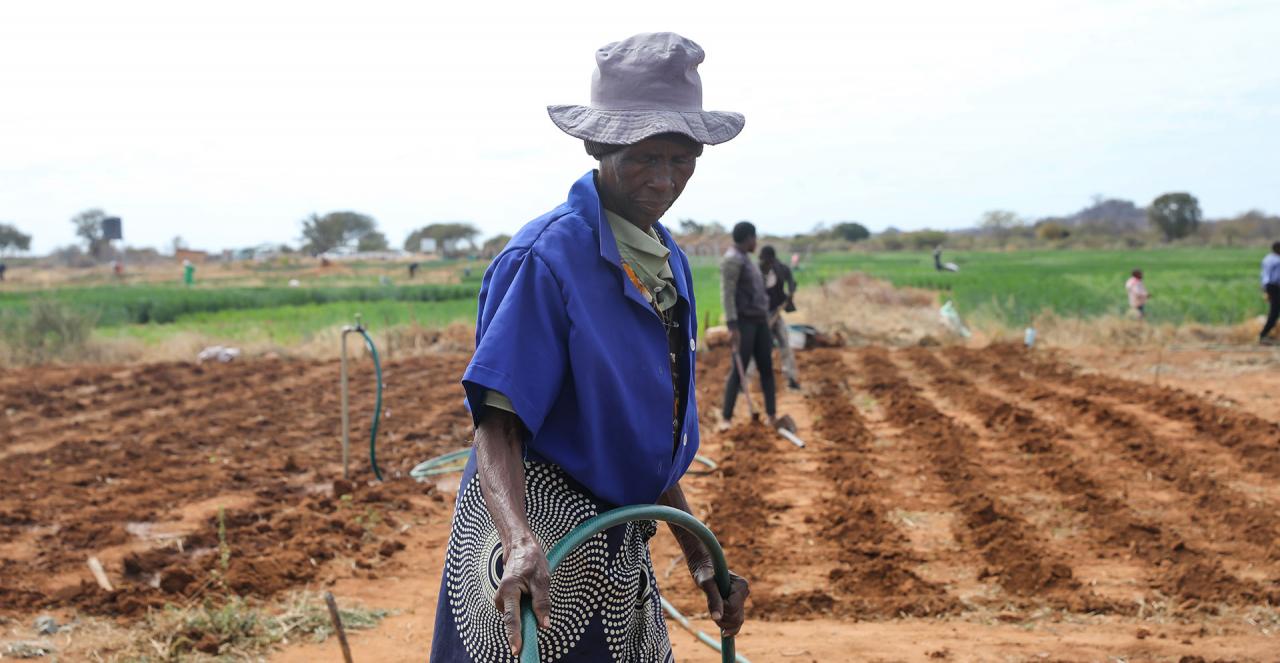Written By: Faith Jemosop
Zimbabwe’s struggle with drought and food insecurity is being met with long-term solutions rooted in climate resilience, sustainable farming, and rural empowerment. One such transformative initiative is the African Development Fund’s investment in Zimbabwe’s agricultural value chains.
Why Climate-Resilient Agriculture Matters
Drought has become a recurring challenge for many regions in southern Africa, with Zimbabwe being one of the hardest hit. Smallholder farmers, especially those relying on livestock and subsistence crops, have been particularly vulnerable to climate shocks. These events not only reduce yields but also jeopardize food security, income stability, and the livelihoods of entire communities.
Building climate-resilient agriculture is not just a response to these challenges, it’s a proactive strategy to equip communities with the tools, knowledge, and infrastructure they need to withstand and recover from climate-related disruptions.
Investing in the Backbone of Rural Livelihoods
To address this issue, Zimbabwe has partnered with international development institutions to implement sustainable, climate-smart agricultural initiatives. One such effort, the Agricultural Value Chain and Livelihoods Enhancement Project (AVCLEP), is supported by a grant from the African Development Fund (ADF), the concessional window of the African Development Bank Group.
Also read: How Climate Change is Reshaping Life in Sub-Saharan Africa
This grant focuses on building capacity in drought-prone rural regions by targeting three key provinces Masvingo, Matabeleland South, and Bulawayo Metropolitan. These areas are home to high livestock populations and some of the country’s most climate-vulnerable communities.
What the Project Aims to Do
The primary objective of AVCLEP is to improve food and nutrition security while increasing household income and resilience through:
- Rehabilitating agricultural infrastructure, such as dip tanks and water systems.
- Expanding access to water using solar-powered boreholes.
- Supporting livestock and crop value chains to create jobs and increase agricultural productivity.
- Training communities in climate-smart agriculture and integrated land-use planning.
- Improving catchment management and restoring degraded land for sustainable water and soil use.
This integrated approach ensures that interventions are not only immediate but also scalable and sustainable.
Who Benefits and How
The project directly targets:
- 7,000 livestock-keeping farmers
- 42,000 smallholder crop farmers
It indirectly benefits approximately 90,000 rural residents through improved access to water, veterinary services, and community-based development programs.
Importantly, gender and youth inclusion are prioritized, with 50% of beneficiaries being women and 20% being youth. This helps to address systemic inequalities and ensures that women and young people play a central role in agricultural transformation.
The Broader Economic Impact
Agriculture in Zimbabwe is more than just a way of life, it’s a foundation for economic development. By strengthening value chains, the project is expected to:
- Create 200 full-time jobs and 2,800 seasonal jobs across the agricultural ecosystem.
- Increase monthly household income from around $85 to $120, lifting many families above the poverty line.
- Reduce the dependency on food imports and emergency aid through self-reliance.
The emphasis on value addition rather than just raw production means that communities can participate in more profitable parts of the agricultural chain, from processing to marketing.
Why This Matters for Africa as a Whole
Zimbabwe’s efforts are part of a growing movement across Africa to tackle food insecurity through long-term planning and inclusive development. With climate change expected to increase the frequency and intensity of droughts, projects like AVCLEP offer a blueprint for how to future-proof agriculture in similar environments.
Also read: How Renewable Energy Helps Combat Climate Change
They align with broader continental goals under the African Union’s Comprehensive Africa Agriculture Development Programme (CAADP) and global targets under the Sustainable Development Goals (SDGs), particularly:
- SDG 1: No Poverty
- DG 2: Zero Hunger
- SDG 13: Climate Action
- SDG 5: Gender Equality
A Model for Replication
One of the most important features of the AVCLEP project is its potential to serve as a replicable model across other climate-affected regions. The use of solar energy, water-efficient technologies, and inclusive economic planning sets a strong precedent for sustainable rural development.
Through collaboration between governments, international financial institutions, and local communities, such models can be adapted and scaled in similar contexts across the continent.
Agricultural transformation is not an overnight process. It requires sustained investment, local ownership, knowledge-sharing, and supportive policy environments. However, the seeds planted by initiatives like AVCLEP promise a more resilient future, not just for Zimbabwe, but for all of Africa’s rural communities facing the twin challenges of climate change and poverty.
As global climate conditions continue to evolve, it is increasingly clear that investing in people, land, and sustainable farming systems is one of the most powerful ways to build long-term resilience. With consistent support and a clear vision, agriculture can become a source of strength in even the most drought-prone regions.






